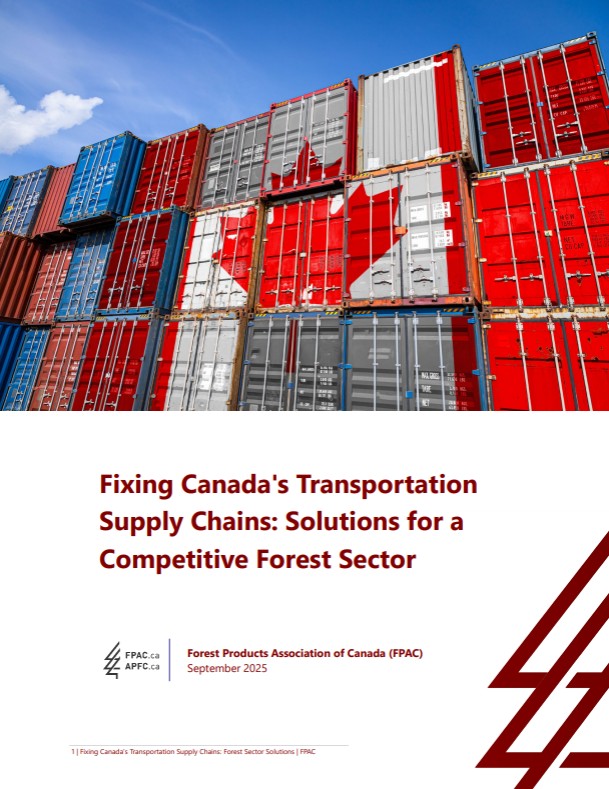FOREST SECTOR ACTION PLAN: A CRITICAL PRIORITY FOR CANADA’S ECONOMY, COMMUNITIES, AND CLIMATE
Canada’s forest sector has long been recognized for its unique ability to drive economic growth, deliver low-carbon solutions, and sustain communities across the country. Our industries directly employ more than 200,000 people from coast-to-coast, generate $87 billion in economic activity, and represent Canada’s fourth-largest Canadian export industry—with forest products accounting for $37 billion, or 5% of all Canadian exports in 2024.
The forest sector is vital to tackling some of Canada’s biggest collective challenges: building affordable homes, reducing wildfire risk and carbon emissions, creating jobs, and supporting rural and Indigenous prosperity. The blend of economic and civic benefits forestry produces has been underutilized and absent from national policy conversations for far too long. Recent signals from our federal government have been welcome, but there is far more to be done.
Forest industries are highly integrated, trade-exposed, and heavily regulated. Pressure applied in one area is quick to ripple across others. When a sawmill shuts, a pulp and paper mill loses the wood chips that serve as its inputs. When the United States increases duties on softwood lumber, companies must withstand financial strain that accelerates closures and disrupts supply chains throughout the sector. When regulatory pressures increase, additional complexity and cost threaten competitiveness and deter investment. When rail service is insufficient or a work stoppage shuts down a key ocean port, customer confidence suffers, and market share is lost to global competitors. It is precisely these factors which have led to 49 mill closures and 8,700 lost jobs in the last decade alone.
This trajectory is not inevitable. With global demand for wood products expected to rise by nearly 50% from 2020 to 2050, Canada should be supplying more wood to Canadians and the world, not less. Without urgent policy corrections, investment will continue to flow to more competitive jurisdictions, leaving Canadian communities, jobs, and climate goals at risk.
WITH A MANDATE TO UNLOCK ECONOMIC GROWTH, DIVERSIFY TRADE, AND BUILD THE STRONGEST ECONOMY IN THE G7, CANADA HAS A PARTNER IN THE FOREST SECTOR.
We welcome the government’s early actions to support the sector—including recent reliefs for the softwood lumber industry. These measures are important first steps to address immediate pressures facing workers and communities. But the scale of the challenges before us requires a more structural, long-term response.
FPAC’S FOREST SECTOR ACTION PLAN OUTLINES WHAT IS NEEDED FROM GOVERNMENT TO MAXIMIZE THE ECONOMIC AND CIVIC BENEFITS OF FORESTRY:
1. Create the enabling conditions for prosperity through regulatory modernization and growth incentives;
2. Ensure that as investments are made, trading relationships and enabling infrastructure can deliver products to global markets.
3. Use all available tools to grow sector capacity, integration, and innovation into a housing & wood construction advantage;
These initiatives are interdependent, and if pursued in concert will rebuild investor confidence, protect and grow jobs, and deliver housing, climate, and economic results for Canadians.


.png)
%20(1).png)




